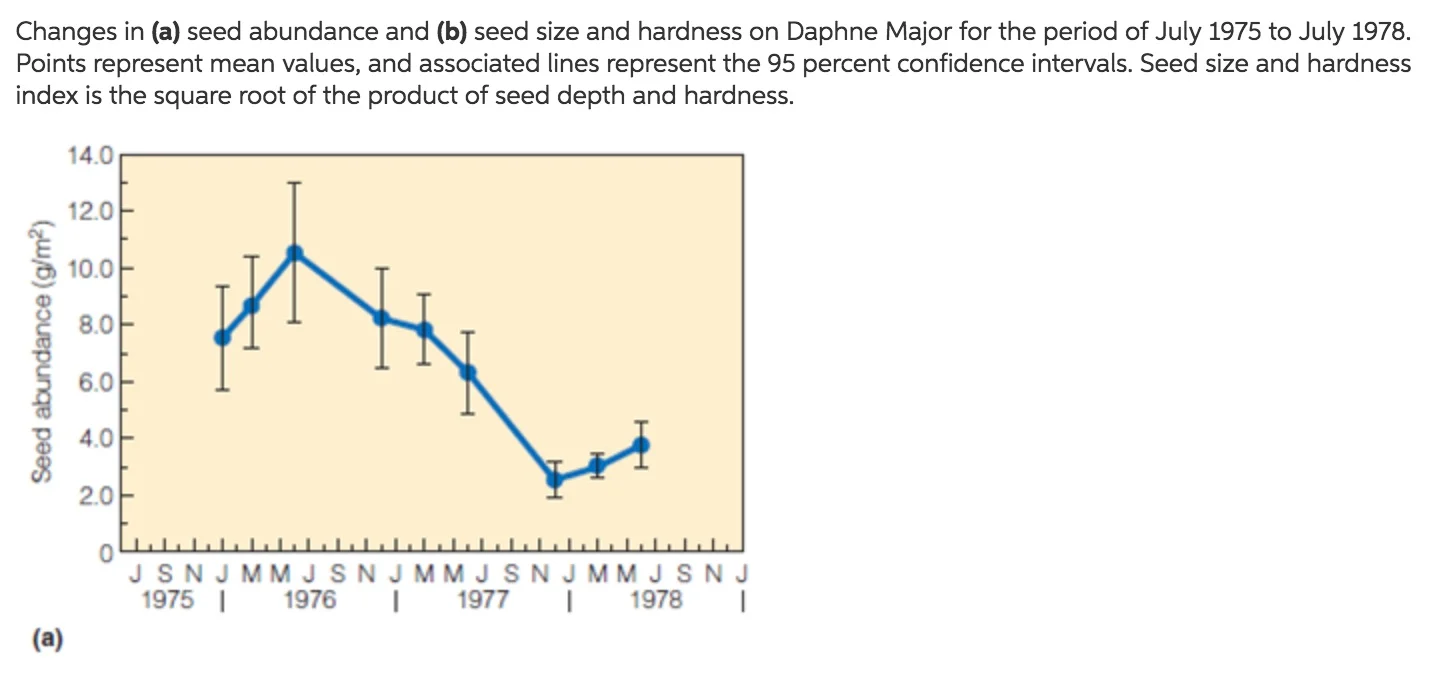Beak of the Finch
Guiding Question: What mechanism changed the beak of the finch over time?
Directions: Gather evidence from this page to support your claim. You may not use any other webpages or sources. Organize your evidence in a Claim Evidence Reasoning poster on the whiteboard.
Step 1) Gather Evidence
Step 2) Make a Claim
Step 3) Justification of Evidence
Evidence
Finch Data (Google Sheet) - click here
Band refers to an individual's identity; more specifically, the number on a metal leg band it was given.
Species name is Geospiza fortis, which is the medium ground finch.
Sex is indicated as male, female, or unknown. The reason for the "unknown" category is that males start their lives looking like females; after one or more years they molt into a plumage with some black feathering that indicates they are males. The heading
First adult year refers to the year after the individual hatched from an egg.
Last year refers to the last year of that individual's life. Fifty individuals did not survive beyond 1977, the year of the drought, whereas 50 survived to 1978 and later years.
The next six columns provide the morphological measurements of individuals in the group that died in 1977 and in the group that survived.
- Weight is in grams; the other measurements are in millimeters.
- Tarsus is part of the leg.








